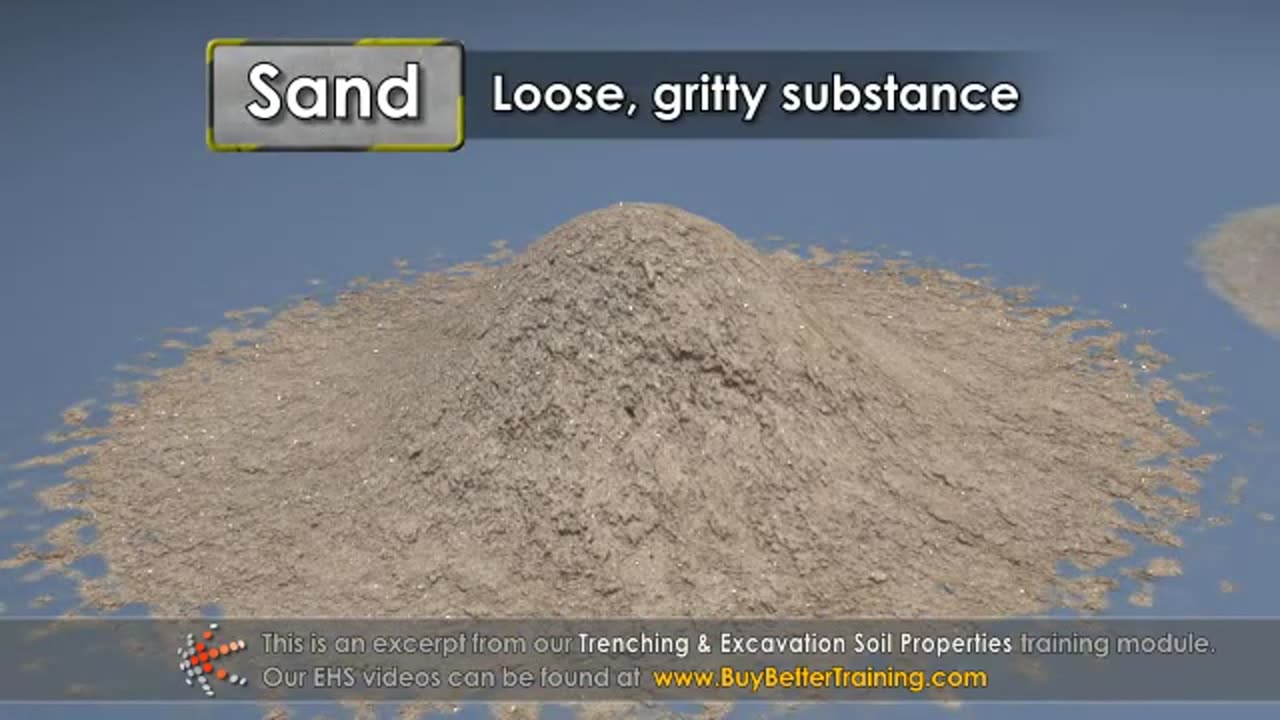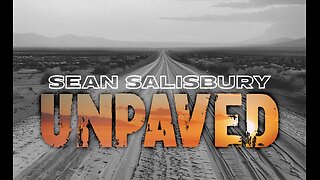Premium Only Content

Trenching and Excavation - Soil Properties Training
### **Trenching and Excavation: Soil Properties Training Outline**
This training focuses on understanding soil properties critical for trenching and excavation safety. Recognizing and classifying soil types helps prevent cave-ins, the leading cause of injuries and fatalities in excavation work.
---
### **1. Introduction to Soil Properties**
- **Objective of training:**
- Teach workers and supervisors how to identify and classify soil.
- Ensure the correct selection and application of protective systems.
- **Why soil properties matter:**
- Soil stability determines the likelihood of a trench collapse.
- Proper assessment minimizes hazards and ensures compliance with safety regulations.
---
### **2. Soil Hazards in Trenching and Excavation**
- **Cave-ins:** Resulting from unstable or improperly classified soil.
- **Water in soil:** Weakens stability and increases risks.
- **Vibrations:** From machinery or nearby traffic that can destabilize soil.
- **Heavy loads:** Applied pressure from equipment or spoil piles near trench edges.
---
### **3. Soil Classification**
#### **Types of Soil (Based on OSHA Standards):**
- **Stable rock:** Natural solid material capable of sustaining vertical excavation walls.
- **Type A soil:**
- Most stable.
- Examples: Clay, silty clay, and hardpan.
- Can hold its shape in vertical excavations.
- **Type B soil:**
- Moderately stable.
- Examples: Silt, sandy loam, medium clay, angular gravel.
- Typically requires protective measures.
- **Type C soil:**
- Least stable.
- Examples: Gravel, sand, and saturated soils.
- Most prone to cave-ins and requires the highest level of protective systems.
#### **Factors Influencing Soil Stability:**
- **Cohesion:** Ability of soil particles to stick together (e.g., clay vs. sand).
- **Moisture content:** Affects cohesion and stability.
- **Grain size:** Impacts permeability and structural integrity.
- **Slope and depth:** Deeper and steeper excavations increase risks.
---
### **4. Soil Testing Methods**
- **Visual Inspection:**
- Look for signs of instability: Cracks, fissures, and water seepage.
- Observe soil texture and moisture level.
- **Manual Testing:**
- **Pocket penetrometer:** Measures compressive strength.
- **Thumb test:** Press thumb into soil to assess consistency.
- **Dry strength test:** Examine soil fragments' ability to break apart.
- **Plasticity test:** Roll soil into threads to check for pliability.
- **Advanced Laboratory Tests:** Used for critical projects requiring precise soil analysis.
---
### **5. Protective Systems Based on Soil Properties**
- **Stable rock or Type A soils:** May allow steeper slopes with fewer protective measures.
- **Type B soils:** Require more gradual slopes, shoring, or trench boxes.
- **Type C soils:** Necessitate protective systems like trench shields and sloping to at least 1½:1 (horizontal to vertical).
---
### **6. Recognizing Hazardous Soil Conditions**
- **Waterlogged or saturated soil:** Increases weight and reduces stability.
- **Previously disturbed soil:** Less cohesive and more prone to shifting.
- **Soil layering:** Different layers of soil types can reduce overall stability.
- **Weather impact:** Rain, freeze-thaw cycles, or drought conditions can alter soil properties quickly.
---
### **7. Competent Person's Role in Soil Classification**
- **Responsibilities:**
- Perform soil analysis before excavation begins.
- Monitor conditions continuously during excavation activities.
- Adjust protective measures as needed when soil properties change.
- **Knowledge required:** Understanding of soil mechanics, testing methods, and OSHA standards.
---
### **8. Hands-On Training**
- **Soil identification exercises:**
- Classify soil samples into Type A, B, or C categories.
- Perform pocket penetrometer and plasticity tests.
- **Simulated trench setup:**
- Demonstrate how soil classification affects protective system design.
- Discuss real-world examples of trench failures due to improper soil analysis.
---
### **9. Regulatory Compliance**
- Overview of OSHA requirements for soil classification:
- Soil testing before trenching starts.
- Daily and as-needed inspections by a competent person.
- Documentation of soil conditions and protective systems used.
---
### **10. Case Studies and Lessons Learned**
- Analyze real-life trenching incidents:
- Causes of collapse related to soil misclassification.
- Corrective actions and prevention strategies.
---
### **11. Assessment and Certification**
- Conduct a written or practical evaluation to assess understanding of soil properties.
- Issue certificates to participants who demonstrate competency.
---
Would you like additional emphasis on testing methods or real-world examples for this training? Let me know!
-
 6:54
6:54
HSESafetyInformation
7 months ago6 Must Try Breakfast recipes By Food Fusion
351 -
 32:49
32:49
Simply Bitcoin
1 day ago $0.88 earnedBitcoin Crucible w/ Alex Stanczyk | EP 1
8.13K -
 1:57:37
1:57:37
Tucker Carlson
2 hours agoCharlie Sheen’s Craziest Hollywood Stories and Why He Refuses to Believe the Official Story of 9/11
24.6K37 -
 1:33:12
1:33:12
Sean Unpaved
3 hours agoRyder Cup Tee-Off, CFB's Week 5 Madness, & the NFL's Win-or-Wilt Week 4
17K1 -
 2:07:01
2:07:01
The Culture War with Tim Pool
4 hours agoWho Really Killed Charlie Kirk? Truth Behind Kirk Assassination | The Culture War with Tim Pool
216K199 -
 1:25:28
1:25:28
Lara Logan
13 hours agoTHE REMNANT RISES: Matt Shea & The New Generation of Pastors on Fire for God & Country | Episode 37
27.7K4 -
 4:30:51
4:30:51
Nikko Ortiz
6 hours agoADHD, Crashouts, and Karens - Rumble LIVE
76.6K11 -
 49:21
49:21
Steven Crowder
5 hours agoWhy She's Wrong and other Life Advice from Steven Crowder
209K139 -
 48:24
48:24
The Rubin Report
4 hours agoPress Stunned by Trump’s Brutally Honest Reaction to James Comey Question
61.1K35 -
 1:02:42
1:02:42
VINCE
6 hours agoComey Indicted, Soros Exposed: The Powder Keg Just Exploded | Episode 134 - 09/26/25
263K339